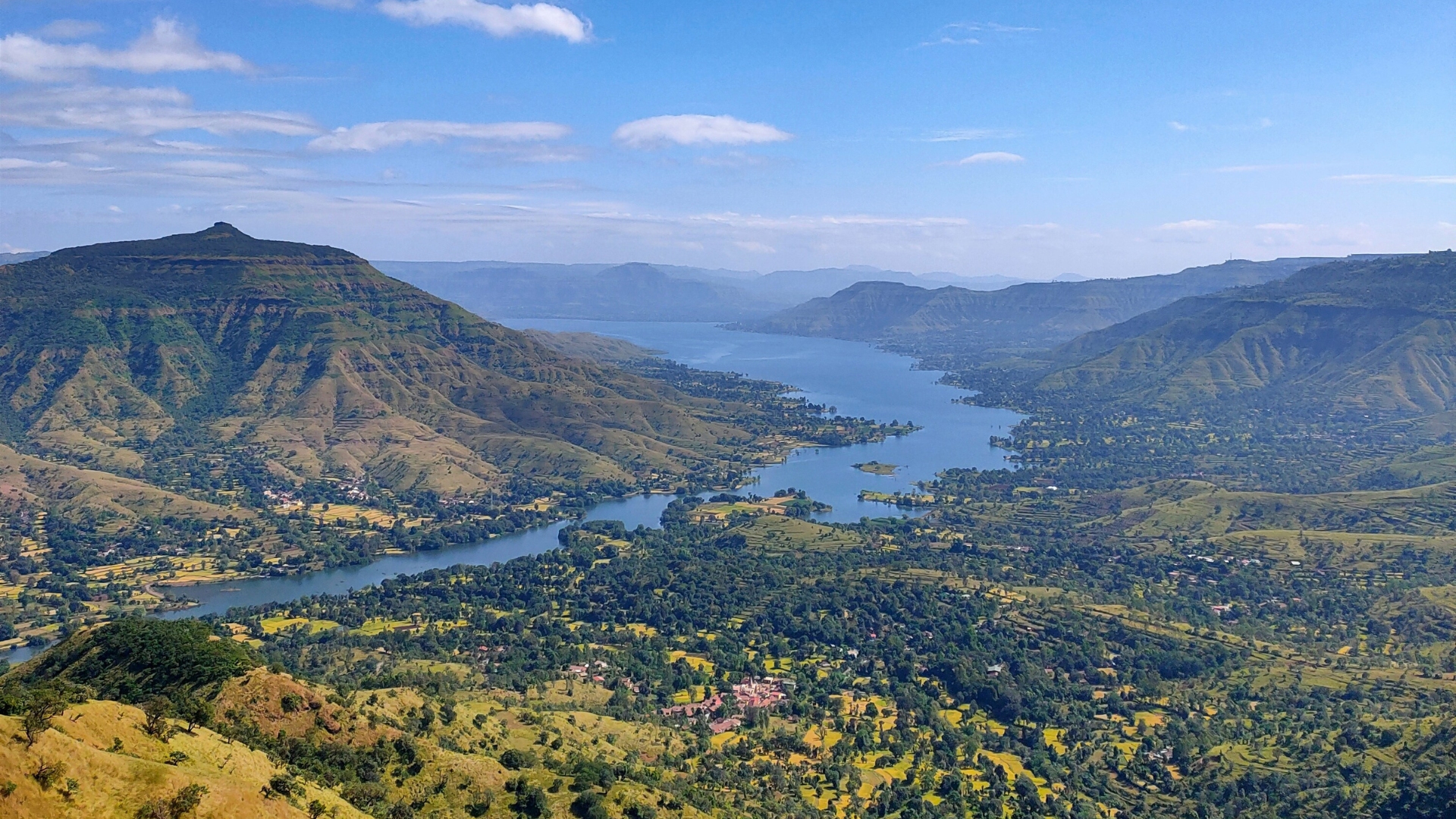Strawberries, Spirituality and the Gentle Pace
The slow allure of Maharashtra’s twin hill stations, Mahabaleshwar and Panchgani, is being repackaged and served up by MTDC. Yet, their enduring appeal lies in its languid pace of life, its colonial, Parsi and spiritual heritage, and its strawberry farms.
By Deepali Nandwani
How many hill stations in India still feel like hill stations—a concept introduced by the British, who sought refuge in these cooler climes during summer? Not many, I’d say. Overrun by tourists, many have lost their quaint colonial charm and laid-back pace.
In the twin hill stations of Mahabaleshwar and Panchgani, however, the slow life and an old-world character survive in patches. I visited these towns at the invitation of the Maharashtra Tourism Development Corporation (MTDC) to attend the Maha Paryatan Utsav 2025, for which a tent city had been set up between the two.
The Utsav drew crowds in search of adventure, scenic beauty, cultural experiences, and fun. For me, it was a chance to rediscover the hill stations of my childhood memories and explore how MTDC is reintroducing them as destinations rich in history, culture, and cuisine.
Accessible by road from Pune and Mumbai, Mahabaleshwar and Panchgani lies in the forested Satara district, near the imposing Pratapgad Fort. Commissioned in the 17th century by Chhatrapati Shivaji Maharaj, this historic hilltop fortress remains a favourite among serious trekkers. My aim, however, was not to go on an arduous climb to the fort, but to explore the charm and potential of the twin hill cities—and understand why MTDC sees them as premier tourism offerings.
Efforts to preserve their heritage are evident. The Sahyadri Trekkers Association regularly cleans up after negligent tourists. Mumbaiites and Punekars who’ve restored colonial homes are working with locals to protect Mahabaleshwar’s natural and historical identity. The beauty of these destinations is that there are no malls, no multiplexes, no huge shopping centres…just villages, cafes, bakeries, and bazaars, known to sell the local crafts and produce,A vacation here can be as simple and satisfying as strolling through shaded lanes lined with charming homes, browsing local bazaars, and spending leisurely afternoons and evenings in one of the many inviting cafés.
Here’s why, with a spot of thoughtful planning, these towns could become India’s top hill destinations.
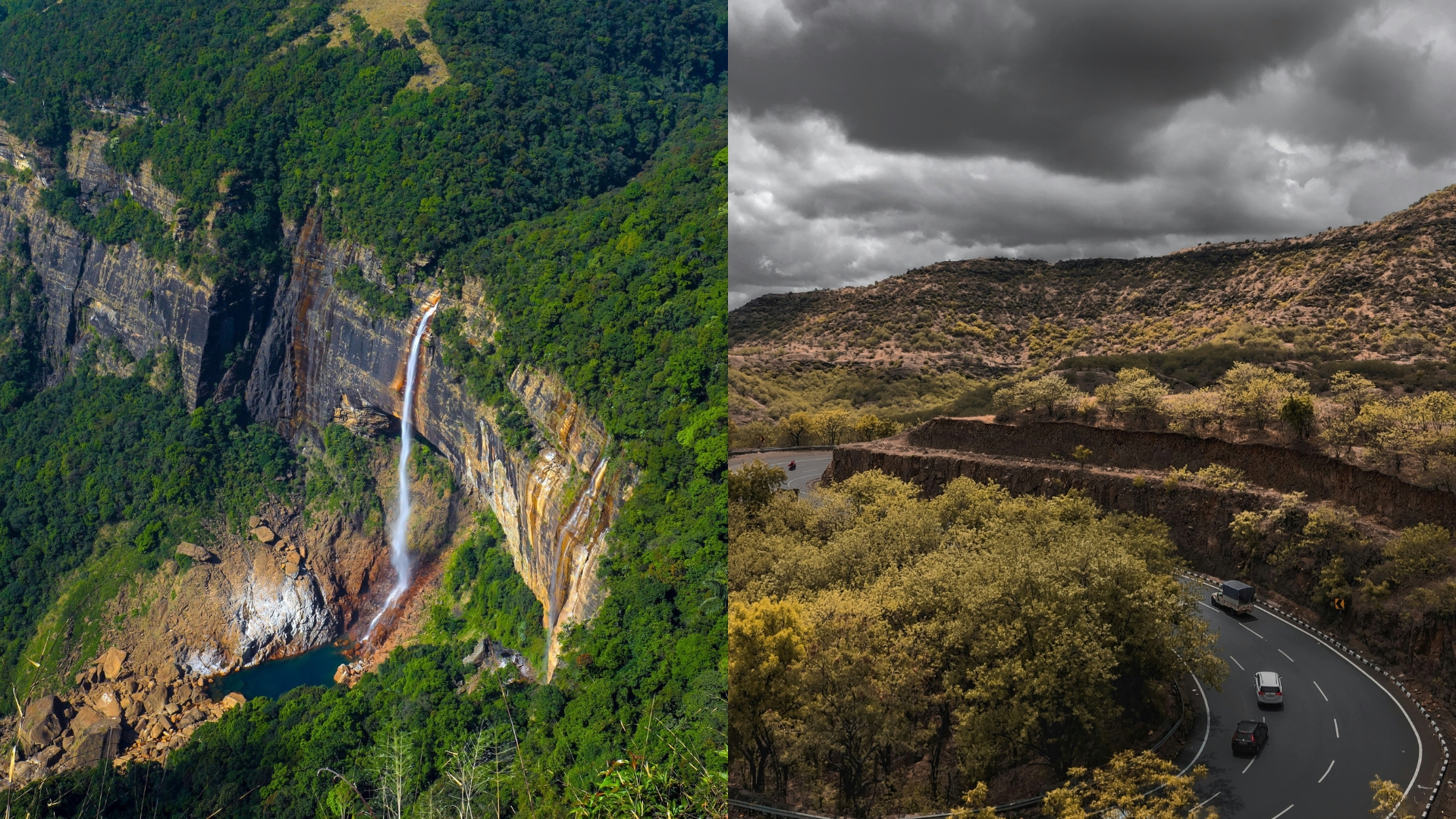
The curving roads in the Western Ghats that lead to the twin hill stations.
Heritage and history
Mahabaleshwar’s spiritual significance centres on Lord Shiva, after whom the town is named—Mahabali, the powerful one. The 13th-century Mahabaleshwar Temple houses a self-manifested lingam and is steeped in legend, including tales of the Pandavas visiting the area.
The temple trail includes Panchganga Temple, where five rivers—one of them, as local beliefs go, the mythical Saraswati—are believed to converge. Its open-air structure is now covered by a colonial-era industrial-style canopy. The stone temples in Old Mahabaleshwar date from the 13th to 15th centuries, when it was a major pilgrimage centre. The stunning Krishnabai Temple, dedicated to the river goddess, sits quietly at the origin point of the Krishna River, its black stone floors and carved pillars offering a moment of tranquil beauty away from the commercial bustle.
Historically, the region's strategic hilltop location made it a crucial part of the Maratha Empire under Chattrapati Shivaji Maharaj. The Mahabaleshwar Temple likely served as a religious centre during his reign.
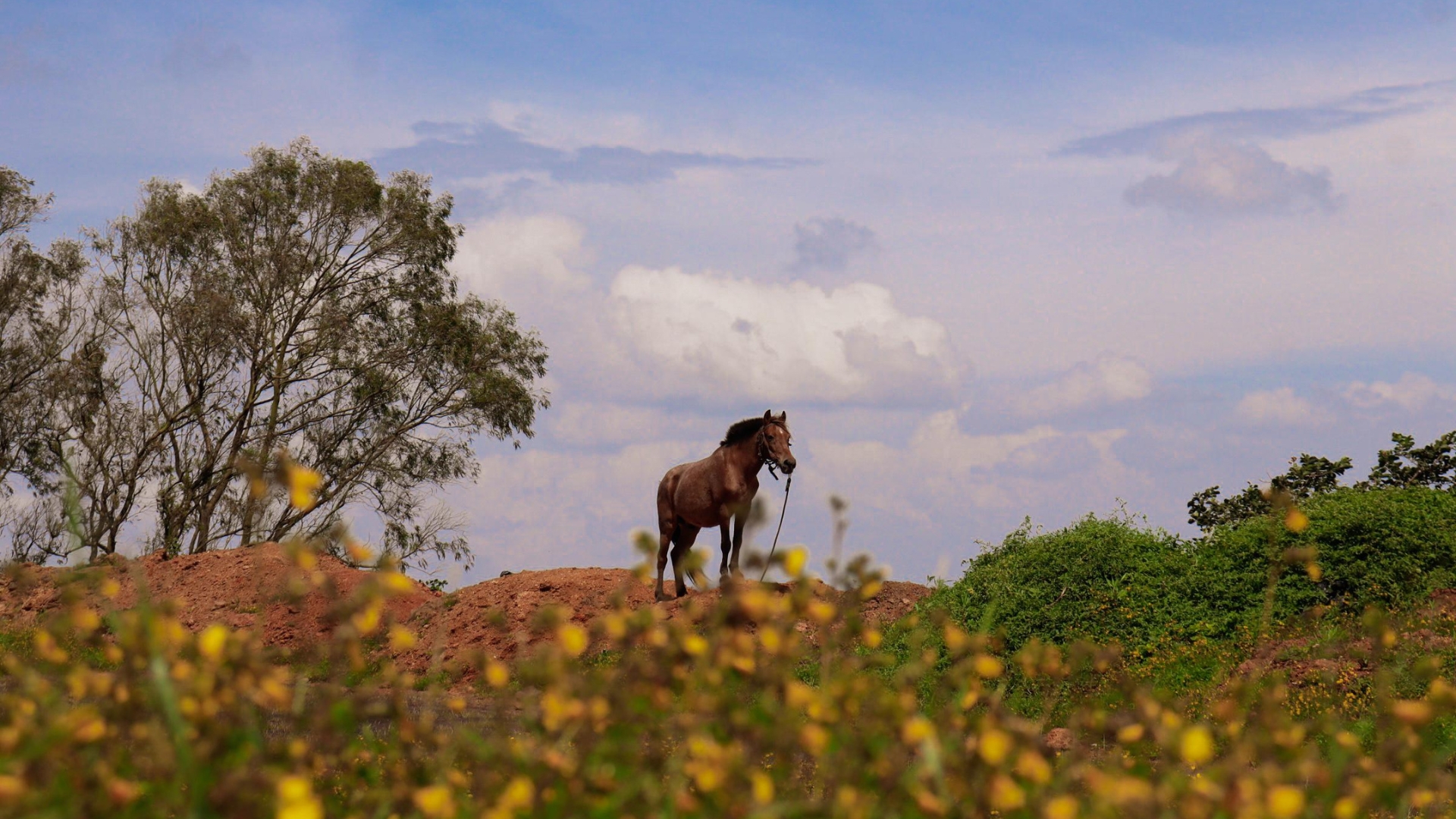
The second largest mountain plateau in Asia, Tableland, Panchgani, gives you beautiful views of the Krishna Valley.
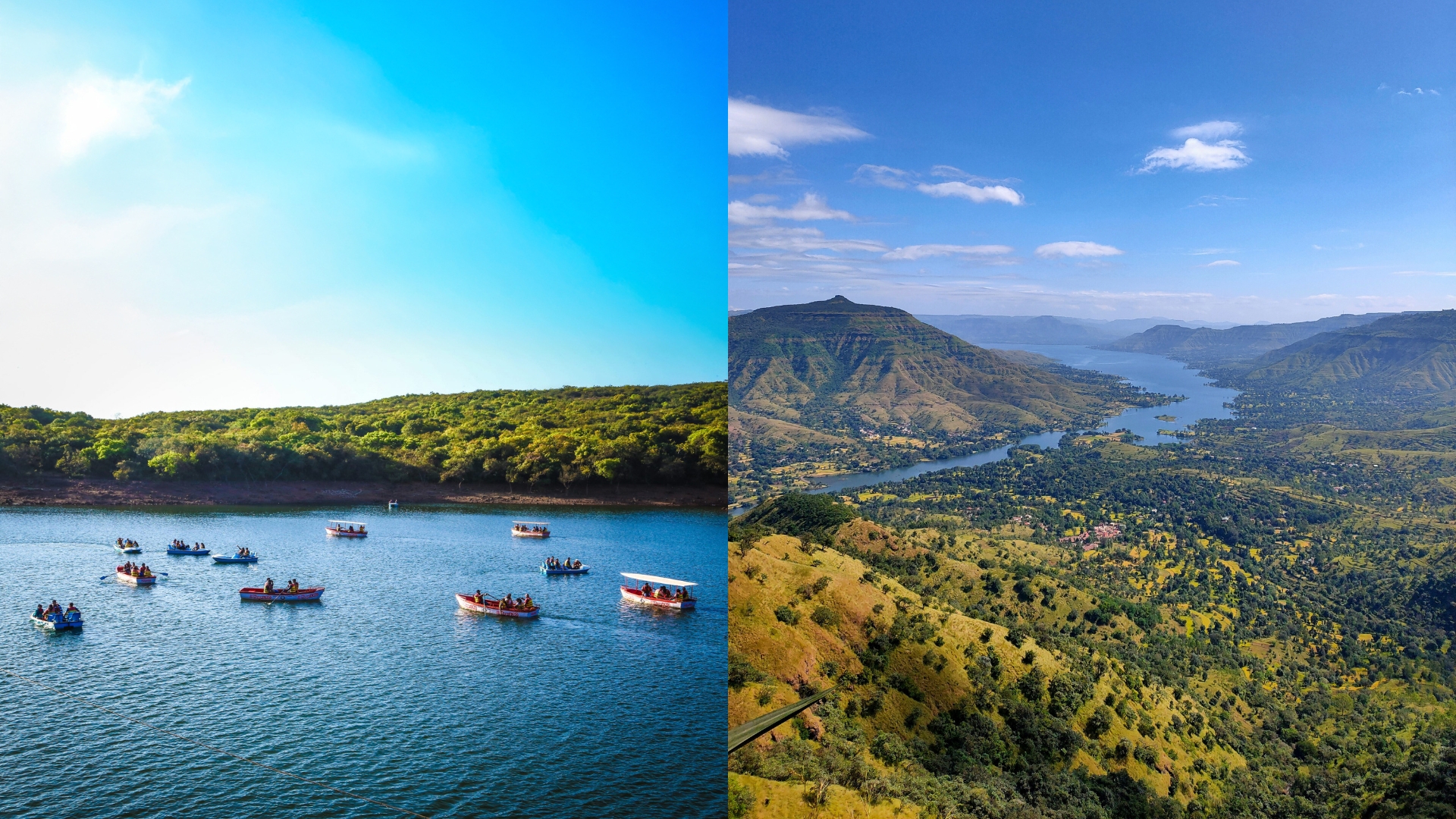
Venna Lake, constructed in 1842; Mahabaleshwar overlooks the Krishna river which originates near the city.
Colonial hill architecture
The British—and later, the Parsis—transformed these villages into the summer capital of Bombay Presidency. Heritage bungalows still stand tall, including one owned by Pranlal Bhogilal, a textiles and spice trader better known as India’s pioneering classic car collector and founder of the Vintage and Classic Car Club of India.
Walk through Raj Bhavan with its grand verandas visible from Wilson Point, or explore Babington House with its cross-shaped layout and grand dining hall. The Gothic-style Holy Trinity Church, the colonial-era Dina Hotel (once speculated to have belonged to Muhammad Ali Jinnah and named after his daughter, Dina), and many other such sites whisper the stories of the past.
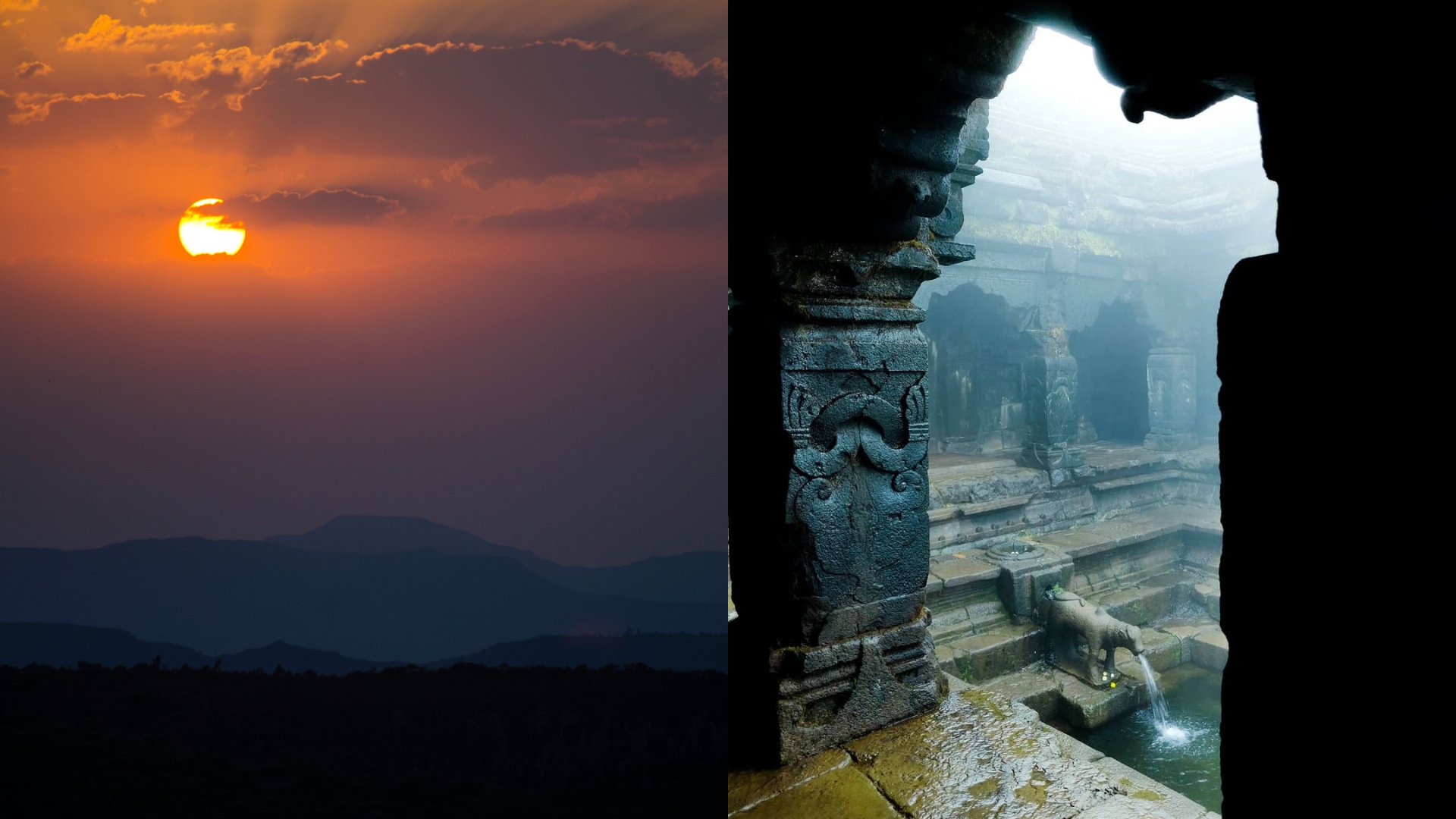
Wilson Point affords stunning sunrise views over the Sahyadri range; A carved stone cow from whose mouth water flows continuously represents the source of Krishna river at Krishnabai Temple.
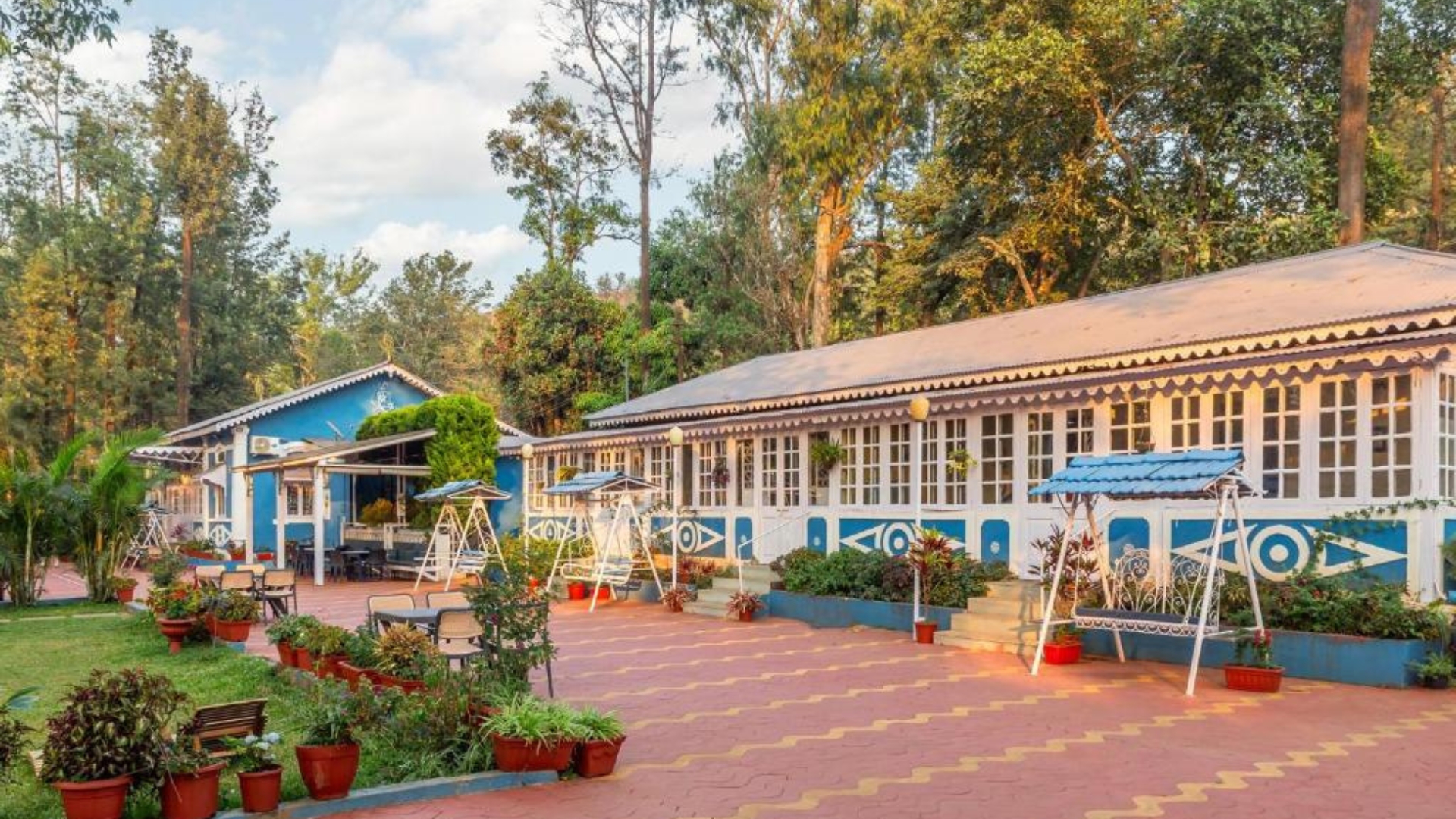
Palazzo, one of Panchgani's oldest heritage resorts.
India’s strawberry capital
Strawberries, native to Europe and North America, were introduced here in the mid-19th century by the British. Third-generation farmer Rajendra Dhage believes it was an Australian who first planted them, and the variety is known as, well, ‘Australia’. The berries eventually took root in the local soil—cool, acidic, and well-drained—and thrived. Now, some 80 varieties are cultivated here, with mother plants imported from abroad. Strawberry farming blankets the region. Visitors can walk through farms, pick fresh berries, and indulge in strawberry and cream at one of the many charming cafés.
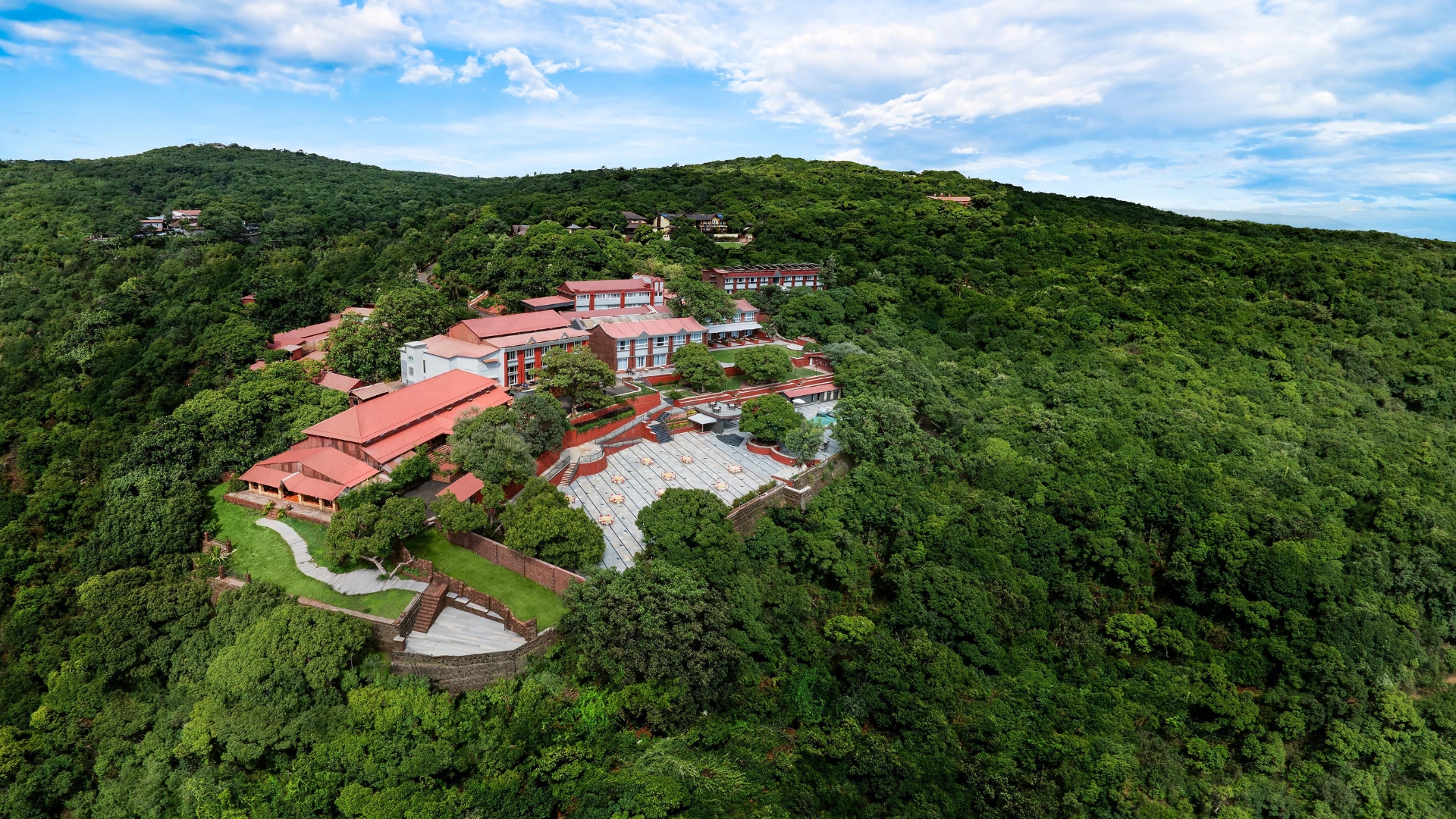
Old hill-top establishments.
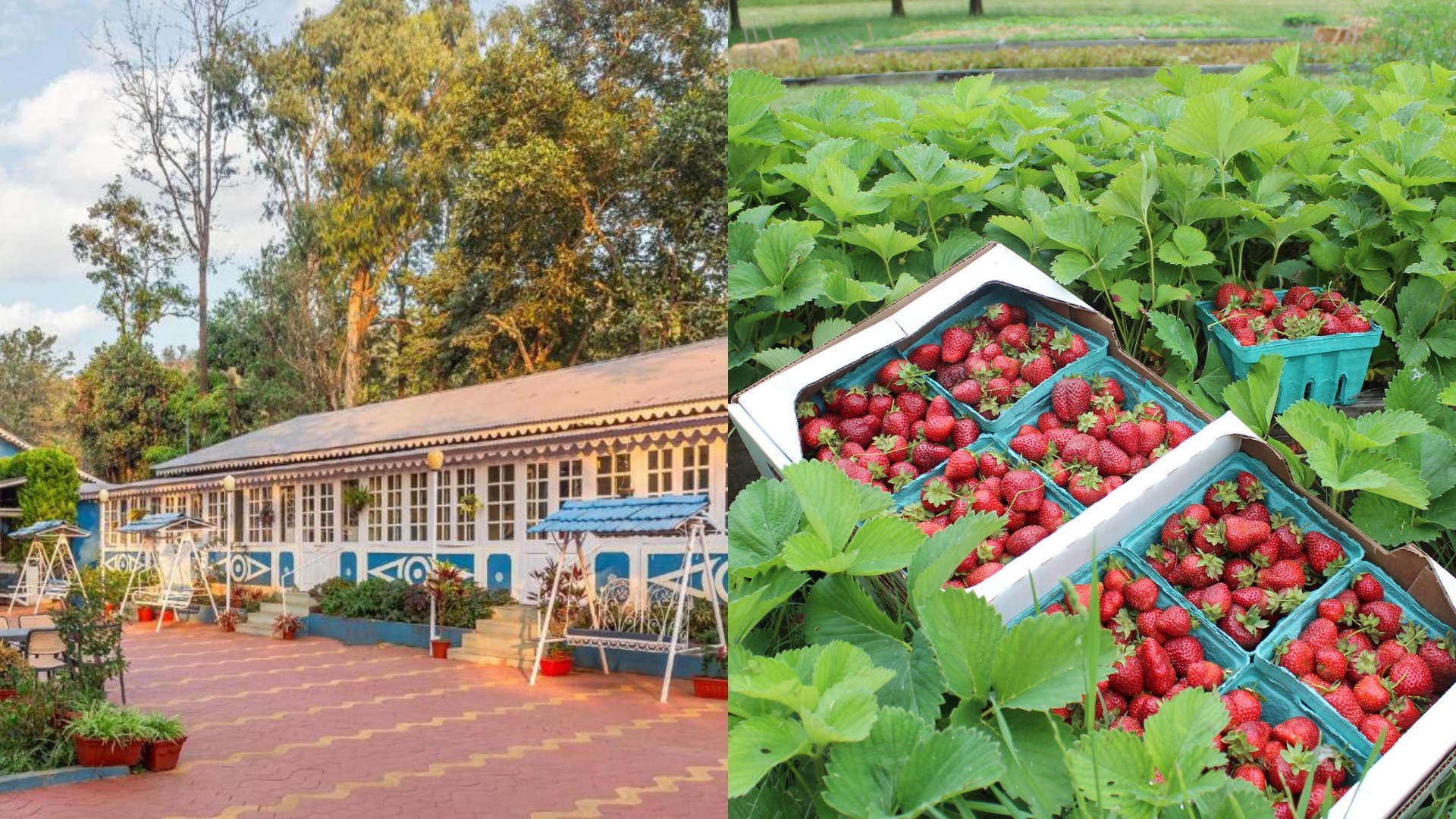
Strawberries have become synonymous with a Mahabaleshwar holiday.
Cafés and bakeries
Mahabaleshwar and Panchgani are home to some of the cosiest cafés and bakeries, a few dating back over a century. In Mahabaleshwar’s Main Market is Elsie’s Dairy and Bakery, a local institution since 1849, beloved for its truffle cake, carrot cake, and mushroom patties. Bagicha Corner on the Mahabaleshwar–Panchgani Road is a local favourite for strawberry and cream. Café Peter, a vegetarian café with a ‘mindful’ menu, was a personal favourite for its Japanese curry rice, lemon ginger tea, and pizzas. Lucky Restaurant and Bakery brings an old-world Irani café charm to the mix.
The valleys and points
The ‘points’—lookouts with dramatic views—were named and popularised by the British. Kate’s Point, named after the daughter of Governor Sir John Malcolm, overlooks Krishna Valley. Sydney Point, named after Sir Sidney Beckwith, offers views of the Pandavgad and Mandhardeo ranges. Wilson Point, the sunrise spot, sits at 1,435 metres. Arthur’s Seat offers views of Konkan Valley and Savitri River. Parsi Point pays homage to the community that summered here.
Today, the twin towns are also known for adventure tourism, with trekking, paragliding, and paramotoring activities promoted by MTDC to attract younger travellers seeking more than heritage alone.
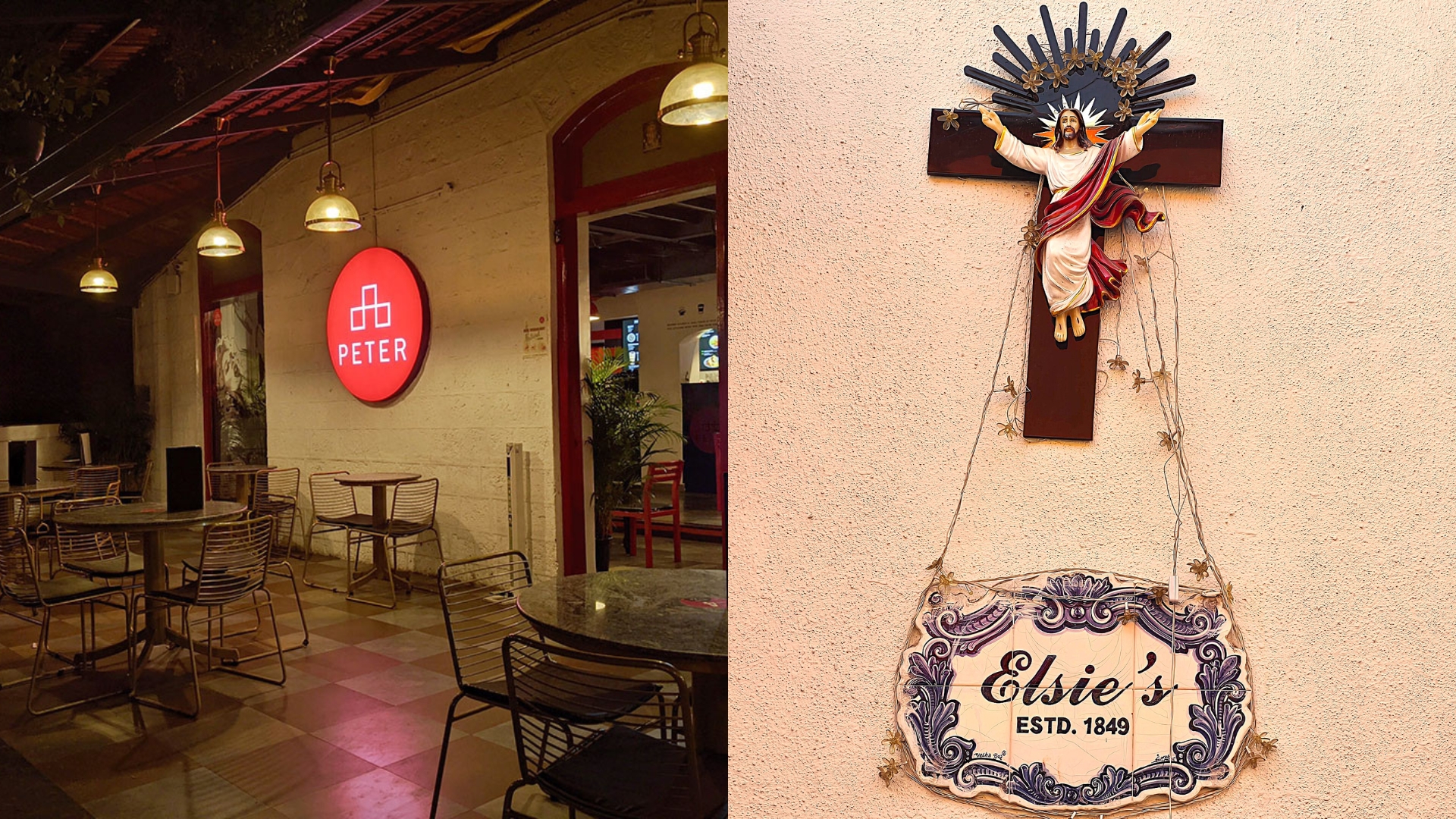
Dina Hotel, Cafe Peter and Elsie's Dairy and Bakery.


























